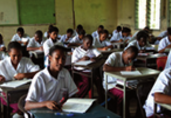The government has vowed to expand the Malaysian vocational education system to help bridge the widening gap between the demand for skilled labour and the available pool of trained workers.
Displaying 1093 - 1098 of 1274
At an average of 5.1% between 2003 and 2012, Turkey has experienced one of the world’s highest growth rates over the past decade. This was accompanied by drops in joblessness and poverty, as well as gains in school enrolment, home ownership and life expectancy.
The large and comparatively diverse higher education sector is expected to see an encouraging increase in demand in the years to come, but a mismatch between the courses chosen by Egypt’s university students and the market’s requirements has highlighted the need for wide-ranging reforms across the university system.
Recent reports that students in some areas of Papua New Guinea (PNG) are crossing into Indonesia for lessons provided a stark reminder of the challenges the government faces in its bid to improve the education system.
Attendance and school construction are on the rise in Mongolia, and the Ministry of Education (MoE) continues to harness foreign expertise, suggesting significant progress in the sector. However, critics say the government needs to do more to ensure improved and inclusive schooling at all levels, particularly given the promise of growing social development as a result of increased resource-related investment.
Chapter | Health & Education from The Report: Brunei Darussalam 2013
Brunei Darussalam’s universal health care system has helped it meet most of the health care targets set out in the UN Millennium Development Goals by the World Health Organisation. The country has the second-highest life expectancy rate among ASEAN countries. Non-communicable diseases like cancer are now the biggest concerns and, as the price of health care rises, the Sultanate is in the process...





